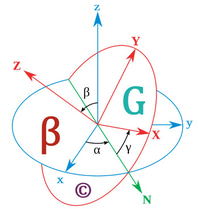How to Conduct a Home Energy Audit and Save Money
Are your energy bills higher than you’d like? Do you feel like your home isn’t as energy-efficient as it could be? A home energy audit is the perfect way to identify areas where you’re wasting energy and take steps to improve efficiency. Whether you hire a professional or do it yourself, a home energy audit can help you save money, increase comfort, and reduce your environmental impact. In this blog, we’ll walk you through the process of conducting a home energy audit and share tips to maximize your savings.
ELECTRICAL ENGINEERINGPROPERTY AND BUILDINGSSUSTAINABILITY
Engr. Benjamin V. Gonzales Jr.
3/11/20253 min read
What is a Home Energy Audit?
A home energy audit is a thorough assessment of your home’s energy use. It identifies areas where energy is being wasted and provides recommendations for improvements. The goal is to make your home more energy-efficient, which can lower your utility bills and reduce your carbon footprint.
Benefits of a Home Energy Audit
Lower Energy Bills: Identify and fix energy-wasting issues to save money on utilities.
Increased Comfort: Improve insulation and sealing to maintain consistent temperatures.
Environmental Impact: Reduce your home’s energy consumption and greenhouse gas emissions.
Home Value: Energy-efficient homes are more attractive to buyers and may have a higher resale value.
How to Conduct a DIY Home Energy Audit
While hiring a professional auditor is the most comprehensive option, you can perform a basic audit yourself. Here’s how:
1. Gather Your Tools
Before starting, gather the following tools:
A notepad and pen to record findings.
A flashlight for inspecting dark areas.
A candle or incense stick to detect air leaks.
A thermometer to check for temperature inconsistencies.
A smartphone or camera to document issues.
2. Analyze Your Energy Bills
Start by reviewing your energy bills to understand your usage patterns.
Compare Bills: Look at bills from the past year to identify seasonal trends.
Check Usage: Note any spikes in usage that could indicate inefficiencies.
3. Inspect for Air Leaks
Air leaks are a major source of energy loss. Check for drafts around:
Windows and Doors: Feel for drafts or use a candle to detect air movement.
Electrical Outlets and Switches: Remove covers and check for gaps.
Attic Hatches and Basement Walls: Look for cracks or gaps where air can escape.
Fix It: Seal leaks with caulk, weatherstripping, or foam sealant.
4. Check Insulation
Inadequate insulation can lead to heat loss in winter and heat gain in summer.
Attic: Measure the depth of insulation. The U.S. Department of Energy recommends at least 10-14 inches of insulation for most climates.
Walls: Check for insulation by removing outlet covers and peeking inside.
Floors: Inspect crawl spaces and basements for insulation.
Fix It: Add insulation where needed, focusing on the attic and walls.
5. Evaluate Heating and Cooling Systems
Your HVAC system is a major energy consumer. Inspect it for efficiency.
Filters: Check and replace dirty filters regularly.
Ducts: Look for leaks or disconnected sections in ductwork.
Thermostat: Ensure it’s programmable and set to energy-saving temperatures.
Fix It: Schedule annual maintenance, seal duct leaks, and upgrade to a smart thermostat.
6. Assess Lighting
Lighting accounts for a significant portion of home energy use.
Bulb Types: Replace incandescent bulbs with energy-efficient LEDs.
Usage: Turn off lights when not in use and consider motion sensors or timers.
Fix It: Switch to LEDs and install energy-saving controls.
7. Examine Appliances
Older appliances can be energy hogs. Check the energy efficiency of:
Refrigerators and Freezers: Ensure they’re set to the recommended temperatures.
Washing Machines and Dryers: Use cold water for washing and clean dryer lint traps.
Dishwashers: Run full loads and use energy-saving modes.
Fix It: Upgrade to ENERGY STAR-certified appliances.
8. Inspect Water Heating
Water heating is another major energy expense.
Temperature: Set your water heater to 120°F (49°C).
Insulation: Wrap the water heater and pipes with insulation.
Leaks: Check for leaks in faucets and pipes.
Fix It: Insulate the water heater and fix leaks promptly.
When to Hire a Professional
While a DIY audit can identify many issues, a professional energy audit provides a more comprehensive assessment. Consider hiring a professional if:
You want a detailed analysis using specialized tools like blower doors and thermal cameras.
Your home has persistent comfort issues, such as uneven heating or cooling.
You’re planning major renovations and want to prioritize energy-efficient upgrades.
Tips to Maximize Savings
After completing your audit, take action to improve your home’s energy efficiency:
Seal and Insulate: Address air leaks and add insulation to reduce heating and cooling costs.
Upgrade Appliances: Replace old appliances with energy-efficient models.
Install Smart Thermostats: Optimize heating and cooling schedules.
Switch to LEDs: Replace incandescent bulbs with energy-saving LEDs.
Use Power Strips: Reduce phantom load by plugging devices into smart power strips.
Final Thoughts
Conducting a home energy audit is a simple yet powerful way to save money and improve your home’s efficiency. By identifying and addressing energy-wasting issues, you can lower your utility bills, increase comfort, and reduce your environmental impact. Whether you do it yourself or hire a professional, the insights gained from an energy audit will help you make smarter decisions about your home’s energy use.
Start your audit today and take the first step toward a more energy-efficient home. Your wallet—and the planet—will thank you!
By following this guide, you’ll be well on your way to creating a more sustainable and cost-effective home. Stay proactive, stay informed, and enjoy the benefits of a more energy-efficient lifestyle!





